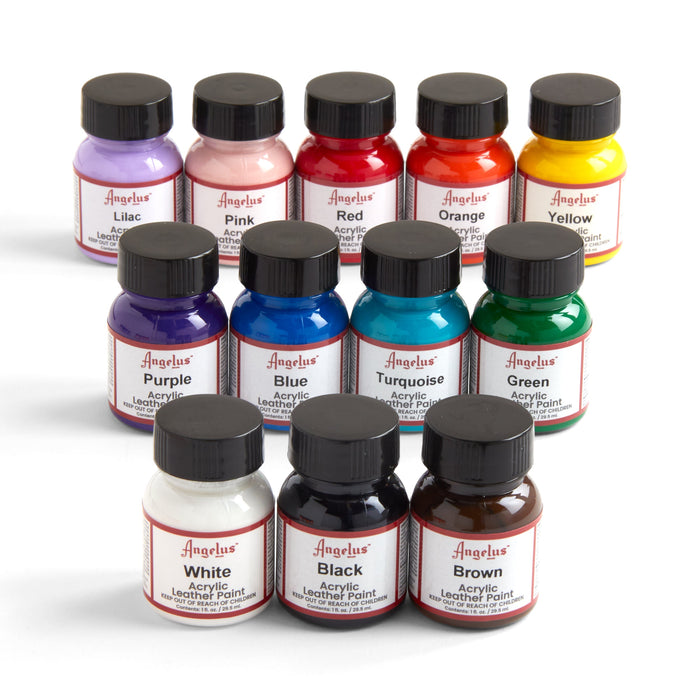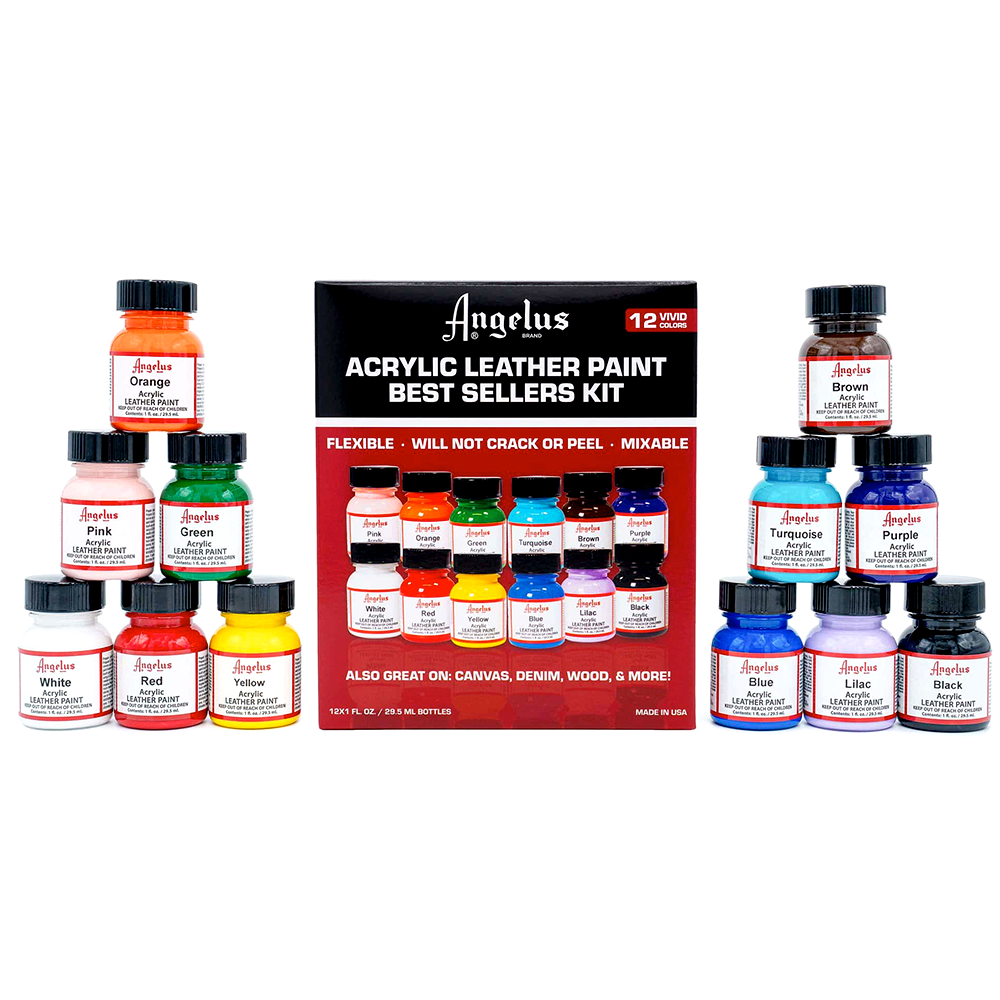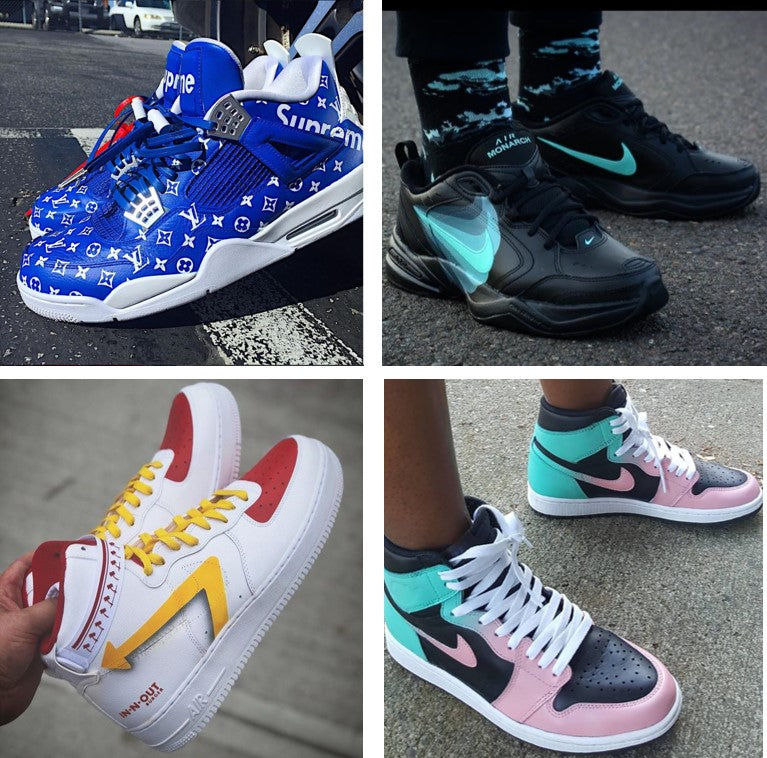Are your favorite leather shoes looking a little worn or in need of a style refresh? Whether you have a classic pair of loafers, trendy boots, or luxe high-tops, the right leather paint can breathe new life into your footwear. This comprehensive guide will explore the best leather paints for shoes, focusing on factors such as durability, color vibrancy, ease of use, and more, making sure you’ll find the perfect option for your needs.
Why Use Leather Paint?
Leather paint has become increasingly popular among shoe enthusiasts and professionals alike. Unlike traditional dyes that can alter the leather’s feel and texture, high-quality leather paints maintain the leather’s integrity while offering vibrant hues. They also provide a protective layer that can help combat wear and tear, making your shoes look newer for longer.
Benefits of Using Leather Paint
- Customization: Leather paint allows you to express your unique style. Change colors or add designs to create a one-of-a-kind pair of shoes.
- Protection: Many leather paints contain elements that protect against scuffs, water, and UV rays, extending the life of your shoes.
- Repair: Leather paint can help cover scratches, scuffs, and other imperfections, making your shoes look as good as new.
- Versatility: Use leather paint not just on shoes but also on bags, belts, and other leather accessories!
Criteria for Selecting the Best Leather Paint
When searching for the best leather paint for your shoes, consider the following criteria:
Durability
Look for paints that can withstand everyday wear and tear. A good leather paint should resist cracking, peeling, and fading, even after repeated use.
Color Range
A wide variety of colors allows for greater creativity when customizing your footwear. Check if the brand offers colors that suit your specific needs.
Ease of Application
Some paints are easier to apply than others. Look for products that come with applicators or kits for a hassle-free experience.
Drying Time
Drying time can vary significantly between products. For quick projects, a paint that dries fast is ideal, while slower-drying options might allow for more adjustments.
Top Leather Paints for Shoes in 2023
Based on extensive research, market analysis, and real-world testing, we’ve compiled a list of the top seven leather paints that stood out in 2023.
1. Angelus Leather Paint
Angelus is a well-known name in the leather care industry. Their leather paint is famous for its versatility and durability.
Features:
- Water-based for easy clean-up
- Comes in a wide range of colors
- Durable finish that resists cracking and peeling
Pros and Cons:
| Pros | Cons |
|---|---|
| High color vibrancy | May require multiple coats for even coverage |
| Quick drying time | Color may fade over time if exposed to sunlight |
| Great for beginners | Can be less effective on very smooth leather surfaces |
2. Leather Studio Paint
Leather Studio offers an innovative approach with its specially formulated paint that adheres well to leather surfaces.
Features:
- Flexible once dry
- Available in both metallic and matte finishes
- Lightweight and easy to apply
Pros and Cons:
| Pros | Cons |
|---|---|
| Perfect for detailed designs | Can be pricier than competitors |
| Non-toxic formula | Some users report slower drying time |
| Highly pigmented | Color may vary with different types of leather |

3. Rust-Oleum Leather Paint
Known for its quality home improvement products, Rust-Oleum has a line of leather paints that are gaining popularity.
Features:
- Dulable and fade-resistant
- Available in spray and liquid form
- User-friendly application
Pros and Cons:
| Pros | Cons |
|---|---|
| Great for larger sections | Limited color options |
| Fast drying time | Spray can require protective gear |
| Excellent adhesion | May need a primer for best results |
4. Fiebing’s Acrylic Leather Paint
Fiebing’s is another classic brand that has earned a loyal following among leather crafters.
Features:
- Water-based and easy to clean
- Highly customizable with mixing options
- Ideal for both small and large projects
Pros and Cons:
| Pros | Cons |
|---|---|
| Good color retention | Requires sealing for outdoor use |
| Great for detailed work | Can be difficult to remove if applied incorrectly |
| Affordable price point | Mixing colors may take practice |

5. Angelus Acrylic Leather Paint Set
This is a pre-packaged set from Angelus that includes multiple colors, perfect for those who want a variety of shades for their creative projects.
Features:
- 5-color set for versatile use
- Comes with brushes for easy application
- Easy to mix for customized colors
Pros and Cons:
| Pros | Cons |
|---|---|
| All-in-one convenience | More expensive compared to single colors |
| Includes applicators | Limited to colors included in the set |
| Great for beginners | Can take time to perfect the application technique |
6. DecoArt SoSoft Fabric Paint
Though primarily a fabric paint, DecoArt is highly favored for its versatility and flexibility when used on leather shoes.
Features:
- Soft finish that feels like leather
- Non-toxic and water-based
- Machine washable after curing
Pros and Cons:
| Pros | Cons |
|---|---|
| Soft hand feel after application | Color may fade over time |
| Ideal for intricate designs | Requires sealing to protect the finish |
| Affordable and accessible | Not suitable for outdoor footwear without proper seals |

7. Leather Dye by Tandy Leather
While primarily a dye, Tandy’s leather dye can also be used effectively for certain shoe painting projects.
Features:
- Alcohol-based dye for deep color penetration
- Highly durable and long-lasting
- Available in various shades
Pros and Cons:
| Pros | Cons |
|---|---|
| Deep penetration for a lasting finish | Can stain non-target areas if not careful |
| Excellent for large projects | May require leather prep for best adherence |
| Custom colors can be achieved by mixing | Dye can be permanent if not cleaned up properly |
Real-World Experiences: Case Studies
Real-world experiences can provide valuable insights into the effectiveness of various leather paints.
Case Study 1: Transforming Old Birkenstocks
One fashion enthusiast, Sarah, decided to revive her well-loved pair of Birkenstocks. The leather had faded, and she wanted to try a trendy color. Using the Angelus Leather Paint, she found the application to be straightforward and loved the vibrant outcome. It took about three coats to achieve her desired color, but the results made her shoes look brand new. Sarah was thrilled with the durability; they survived multiple outings without significant wear.
Case Study 2: Customizing Converse Sneakers
Tom, a sneakerhead, decided to personalize his white Converse high-tops for an upcoming event. He used the Leather Studio Paint, creating his unique design with a combination of colors. The paint was easy to mix and apply, and he loved how it dried supple, maintaining the shoe’s flexibility. After the event, he noticed some wear on the areas with high friction, but a quick touch-up was all it needed. Overall, Tom felt it was a worthwhile investment for personalization.

Tips for Using Leather Paint Effectively
Preparation is Key
Before you start painting, it’s vital to prepare the leather properly. Clean the surface with a leather cleaner or rubbing alcohol to remove dirt, oil, and any existing finish. This step ensures the paint adheres better and results in a smoother finish.
Test Your Paint
Before applying paint to your entire shoe, conduct a test on a small, inconspicuous area. This will allow you to check how the leather reacts to the paint and make adjustments if necessary.
Patience is Virtue
Applying multiple thin layers is better than one thick layer. Thin layers dry faster and reduce the chance of uneven applications. Allow each layer to dry completely before adding the next one.
Protect Your Work
After your masterpiece is complete, apply a leather sealer. This protects the paint from scratches and water damage, ensuring your painted shoes look fresh longer.
Frequently Asked Questions (FAQs)
1. Can I use leather paint on shoes made of synthetic materials?
While primarily formulated for genuine leather, some leather paints can work on synthetic materials. Always check the product label and conduct a patch test before full application.

2. How do I remove leather paint if I make a mistake?
To remove paint mistakes, use rubbing alcohol or a specialized paint remover designed for leather. Make sure to test on a small area first to avoid damaging the shoe.
3. Will leather paint crack over time?
High-quality leather paints are designed to be flexible and resist cracking. However, excessive wear or poor application techniques can lead to cracking. Proper sealing and care can help maintain the paint’s integrity.

4. How long does the leather paint take to dry?
Drying times vary by product, but most leather paints will be touch dry in about 30 minutes to an hour. Full cure times can range from 24 to 48 hours, depending on the thickness of the application and humidity levels.
5. Can I use a heat gun to speed up the drying process?
While you can use a heat source to speed up drying, it’s crucial to keep the temperature low to avoid damaging the leather. A hairdryer on a low setting is often safer than a heat gun.

6. Is it safe to use leather paint indoors?
Most leather paints are non-toxic and water-based, making them safe for indoor use. However, ensure adequate ventilation while painting to avoid inhaling fumes.
7. Can I use fabric paint on leather shoes?
While fabric paints can work on leather, they are not specifically designed for it, which may lead to less durable results. It’s typically better to choose a product designed explicitly for leather.
8. What should I do if the paint fades?
If the paint fades, you can touch it up with additional coats of the same paint. Remember to clean the surface properly before reapplying.
9. Can I paint over existing leather finishes?
It’s not recommended to paint over existing finishes without proper preparation. Strip any glossy finishes or coatings by using a leather preparer or fine-grit sandpaper for better adhesion.
10. Do I need to seal leather paint?
Yes, sealing is highly recommended. A leather sealer will provide an additional protective layer that guards against water, dirt, and wear, extending the life of your painted shoes.
11. How do I care for my newly painted leather shoes?
After painting and sealing, clean your leather shoes with a damp cloth and avoid exposure to heavy moisture or direct sunlight. Regularly apply leather conditioner to keep the material supple and prevent cracking.
Conclusion
Revamping your leather shoes can be a fun and rewarding project, especially with the right leather paint. From casual touch-ups to creative masterpieces, the options are abundant. By following the tips and using the recommended products in this guide, you can unlock a new world of fashion possibilities for your footwear. Don’t let worn-out shoes drag you down—transform them with vibrant colors and personal flair today!